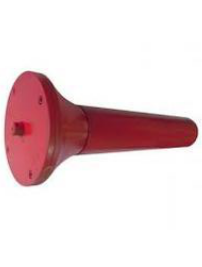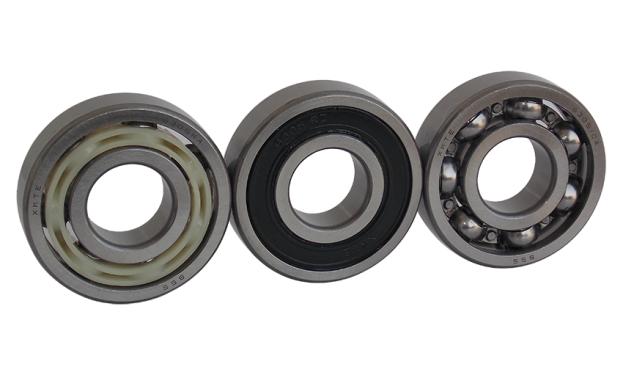[ Instrument Network Instrument R & D ] In many industrial and environmental applications, determining the size and distribution of microscopic particles is critical. For example, in the pharmaceutical industry, on-line measurement and control of particles containing various chemical components (before the tablet is cured) may greatly increase the yield and quality of the final medical product. In addition, the air we breathe, the water we drink, and the food we eat can also contain a variety of unhealthy particles, so detecting them is vital to our health.

(a) A schematic diagram of an experimental setup for measuring particle suspensions, showing optical hardware consisting of fiber-coupled LEDs, a CMOS image sensor camera, and a polymer angular space filter (ASF). (b) The working principle of ASF: collect scattered light from a particle sample until a specific cumulative cut-off angle is reached, which is determined by the geometry of the hole. For simplicity, only two holes are shown, but in the initial experiments, 23 holes with different diameters were used. (c) ICFO optical hardware laboratory prototype.
Recently, in a new paper published in the journal Light Science and Application, ICFO and IRIS from Spain, Ipsumio BV from the Netherlands, Technical University of Denmark, Dresden University of Technology in Germany and University of Leeds in the UK A team of European scientists and engineers combined consumer electronics and artificial intelligence technology to develop a new type of particle analyzer. The particle analyzer is an order of magnitude smaller in size, weight, and cost, and the particle size measurement accuracy is at least comparable to that of a commercial light particle analyzer.
Frans Muller, a professor of chemical process engineering at the University of Leeds and technical manager of ProPAT, said: "The EU-funded ProPAT project aims to provide new sensors for industrial applications. A good example. In real-world conditions and industry, feedback from mid-scale tests has moved sensors from laboratory equipment to a potential industrial environment. "
Traditionally, laser diffraction (LD) particle size analyzers (PSA) have been widely used to measure particle sizes from hundreds of nanometers to several millimeters. In such a device, the laser is focused on a diluted particle sample to produce a diffraction (scattering) pattern, which is measured by a set of light detectors and converted to a particle size distribution using mature scattering theory. These devices are accurate and reliable, but they are large (about half a meter each), heavy (tens of kilograms), and expensive (usually costing about $ 100,000 or more). In addition, their complexity and the fact that they often require maintenance by trained personnel make them impractical, for example, in most online industrial applications, it is often necessary to install probes in a processing environment in multiple locations.
The newly developed particle analyzer uses a collimated beam structure, using a simple LED light emitting diode (LED) and a single metal oxide semiconductor (CMOS) image sensor, similar to the image sensor used in smartphones. The key innovation is a small-angle spatial filter made of an array of holes with different diameters extruded from a polymer rod. When illuminating the target sample, the light will scatter and pass through the ASF to the sensor. The light collected from the holes of different sizes represents a different set of scattering angles. A self-organizing machine learning (ML) model converts the sensor image into particles size. The same device can be easily converted into a haze meter, which is an essential instrument for characterizing a variety of optical materials.
"It's very exciting to see how a simple consumer photonic device is made," said Rubaiya Hussain, the first author of the paper and a PhD candidate in the ICFO Optoelectronics group. The simple combination of LED and mobile phone camera, an innovative angle filter made using scalable photonic crystal fiber and machine learning data processing technology, allows us to make such a compact, cheap and accurate device. "
To validate the new microparticle analyzer, in a liquid dispersion system, researchers tested a mixture of water and glass microspheres at several process concentrations with a size between 13-125 microns. The laser diffraction system cannot measure such a high concentration because light is scattered multiple times and the scattering pattern cannot be converted to particle size. Using random forest machine learning algorithms, you can successfully analyze data from new equipment, increasing the working range of particle sizes and concentrations that can be measured.
Dipl.-Ing, a researcher in the mechanical process engineering group at the Technical University of Dresden, said, "We use the ICFO microparticle analyzer device in Barcelona to collect data from different particle size ranges and standard glass bead concentrations. Based on the results obtained and our experience We are happy to see that the median accuracy of a few percent of the volumetric particle size (D50) is comparable to other measurement technologies (such as LD) in the micrometer range. "
In the future, improvements to optical hardware are also being designed, and researchers are further optimizing innovative ASF components and improving data capture methods in order to generate larger, higher-fidelity data sets for machine learning algorithms. Future work will also include the analysis of non-spherical particles, which are collected using a well-designed dry-wet measurement and sampling system to enable high-precision analysis of a range of industrially relevant systems.
Friction idler roller is made by two parts, plain roller and round friction disk. It is used for automatically training belt by friction self-aligning idlers. Through the rotating components in the center, aligning idlers will correct excess misalignment of belt. When the belt is leaning to one side, friction idlers will rotate to the same side to supplies a reaction to train the belt and keep the machine running normally.

Friction idlers usually deep groove ball Bearing For Conveyor Idler roller.
Series 60.., 62.., 63.., Open/ ZZ/2RS..
6200 Series - Light Series Ball Bearings – Balanced between space and load capacity
6300 Series - Medium Series Ball Bearings – Ideal for heavier load capacity applications

To be the first class, to do the best quality, to make users satisfied, to ensure customers relieved, are our enterprise purposes. Welcome bearing dealers` and Conveyor Idler manufacturers contact from all over the world, and become our partner.




